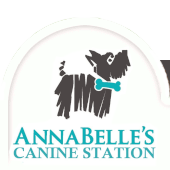Author: Dawn Archer Pizzoferrato, ABCDT owns Arrow Dog Training and offers dog training classes at AnnaBelle’s Pet Station.
 Usually the first question I am asked when tell people I offer clicker training is, “what is clicker training?” The answer to that is simple…It’s a dog training method using a clicker to mark the desired behavior. That usually satisfies most askers, but the question most people have next is, “Why?”
Usually the first question I am asked when tell people I offer clicker training is, “what is clicker training?” The answer to that is simple…It’s a dog training method using a clicker to mark the desired behavior. That usually satisfies most askers, but the question most people have next is, “Why?”
Now THAT is a great question. Why clicker training? As with any training technique, clicker training has its proponents and opponents. Many trainers just don’t see the benefits of an additional tool to deal with, some trainers prefer a non-treat based reward and don’t like the clicker/treat connection, and some just don’t like positive reinforcement training. Whatever the reason for opposing clicker training, there is only one answer to “why” I favor the clicker training method…It works.
Karen Pryor, the godmother of clicker training in the United States, in her article, The Neurophysiology of Clicker Training, which covers research on stimuli and the limbic system of the animal brain, writes:
“… another contributing factor to the extraordinary rapidity with which the clicker and clicked behavior can be acquired might be that the click is processed by the CNS (central nervous system) much faster than any word can be. Even in the most highly-trained animal or verbal person, the word must be recognized, and interpreted, before it can ‘work,’ and the effect of the word may be confounded by accompanying emotional signals, speaker identification clues, and other such built-in information.”
 So, in other words, this means that the clicker sound needs no interpretation. Once the dog learns that a treat follows a click and learns that to get a click he needs to do a requested behavior, he’s got it! You, however, still need to get the dog to DO the behavior. But if the dog is clicker trained, once he does the desired behavior and gets the click, he knows what you want from him and he will repeat it as often as you want. Clicker training is fastest way I have found to teach a dog a new behavior. And the more you use the clicker on new behaviors, the better and faster the dog will learn them. It has a positive cascading effect.
So, in other words, this means that the clicker sound needs no interpretation. Once the dog learns that a treat follows a click and learns that to get a click he needs to do a requested behavior, he’s got it! You, however, still need to get the dog to DO the behavior. But if the dog is clicker trained, once he does the desired behavior and gets the click, he knows what you want from him and he will repeat it as often as you want. Clicker training is fastest way I have found to teach a dog a new behavior. And the more you use the clicker on new behaviors, the better and faster the dog will learn them. It has a positive cascading effect.
The other main reason that I use clicker training is because it’s fun. Dogs love the “game” of it. They seem to be less tired from training and show a stronger willingness to learn. It works wonderfully for shy or fearful dogs, because it gives them confidence.
In my view, the only downfall to successfully clicker training a dog is teaching the handler correct clicker timing. It can be tricky. In your hands, you have the clicker, the leash, the treat, AND you’re luring the dog AND you have click at the precise moment that your dog does the desired behavior. WHEW! That can be hard. But like any new skill, practice makes perfect…just ask your dog! The timing of your click is extremely important because if you click too early, your dog hasn’t completed the behavior; if you click too late, then he’s on to something else. I often recommend practicing clicker timing separately from training with your dog just for this reason.
So, if you want to make training and learning fun for your dog, if you want to teach new behaviors quickly with better retention, or you simply want to learn a new training technique yourself, clicker training is definitely for you. Come join us at Annabelle’s Pet Station. Class size is limited. Six week class is only $109. Sign up today!
 Dawn is an Animal Behavior College Certified Dog Trainer, an experienced Nose Work Instructor, an AKC Canine Good Citizen evaluator, and the owner of Arrow Dog Training.
Dawn is an Animal Behavior College Certified Dog Trainer, an experienced Nose Work Instructor, an AKC Canine Good Citizen evaluator, and the owner of Arrow Dog Training.
Dawn is AnnaBelle’s resident clicker training specialist and she can help you Get Your Dog on Target! Dawn uses scientifically proven “clicker training” and “free shaping” to teach your dog all the basics plus other fun, useful behaviors. She uses operant conditioning and positive reinforcement, without correction, to help you and your dog build a bond of trust and respect.
In addition to presenting Doggie Do Good clicker classes, Dawn also offers Nose Work classes, TDI® (Therapy Dog International) classes and in-home private training. Dawn’s group classes are taught at AnnaBelle’s on Tuesday and Wednesday evenings. Click here to see her complete class schedule!








